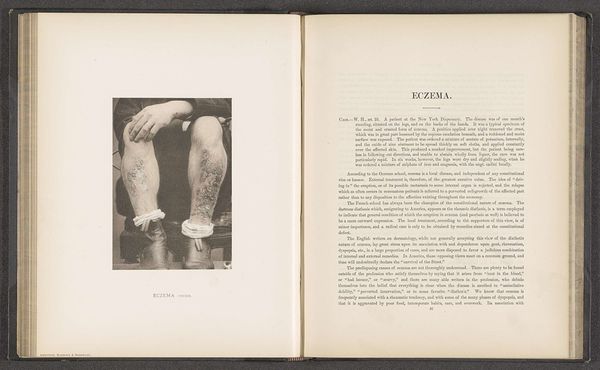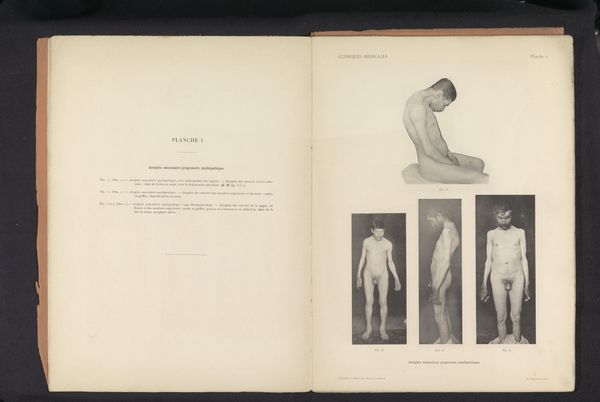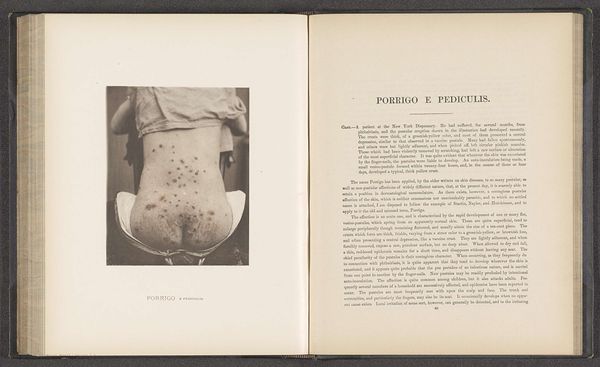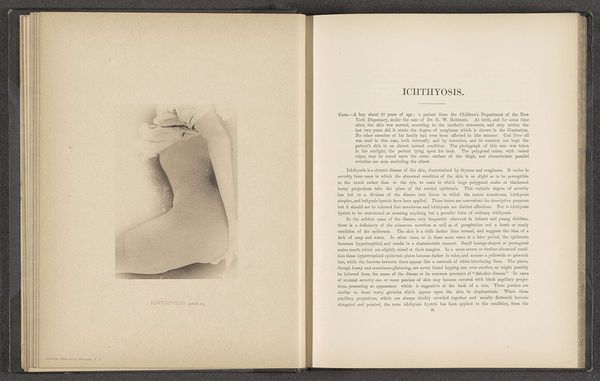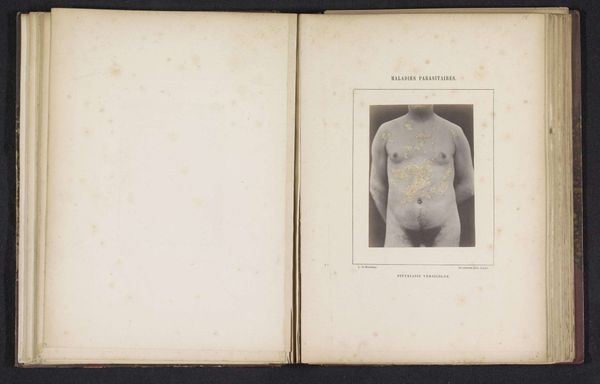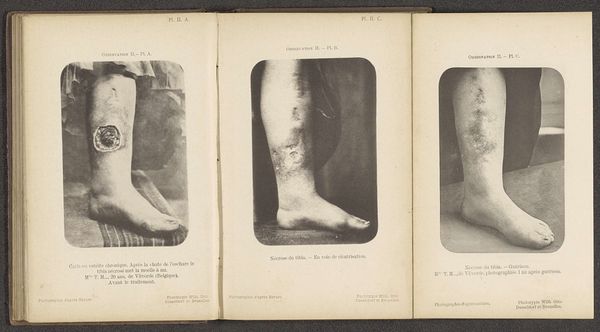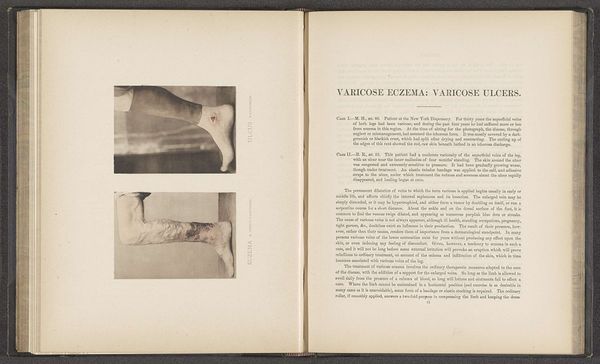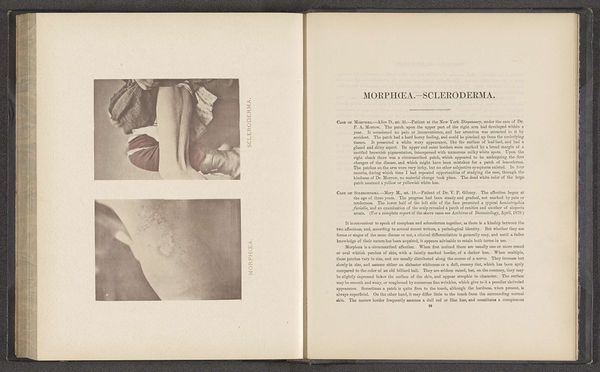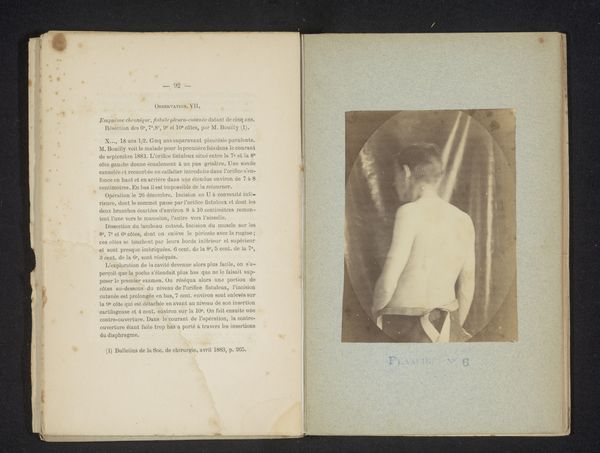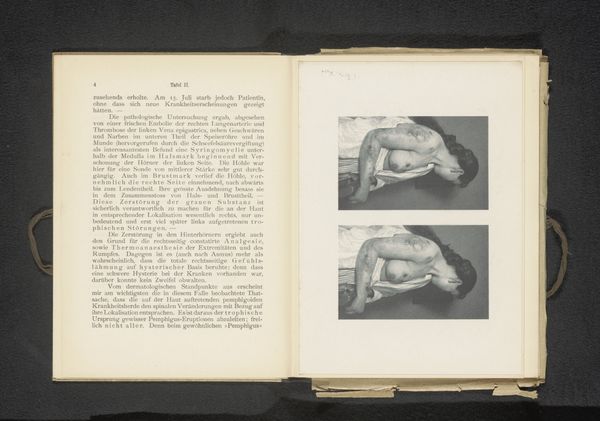
print, photography, gelatin-silver-print
#
portrait
# print
#
photography
#
gelatin-silver-print
#
academic-art
Dimensions: height 103 mm, width 73 mm
Copyright: Rijks Museum: Open Domain
Editor: Here we have a rather clinical image, entitled "Patient suffering from the skin disease 'erythema multiforme'," dating from before 1881. It’s a gelatin-silver print, and honestly, it’s a bit unsettling to look at. What historical perspectives might illuminate our understanding of this piece? Curator: This image provides a window into the history of medicine and its relationship with visual culture. How were diseases documented and disseminated within medical communities during this era? What purpose did this photograph serve—was it for diagnosis, research, or education? Consider also how photographic technology itself shaped perceptions of illness. The image seems very objective, but think about whose perspective is prioritized, and how that influences our interpretation. Editor: So it's less about the individual patient and more about the disease itself being objectified for study? Curator: Exactly. Academic art often served institutional purposes. Medical photography was developing during this period. The rise of visual technologies shaped both medical practice and the way society understood disease and difference. Editor: It’s fascinating to consider how images like this, seemingly objective, are deeply intertwined with social and medical power structures. Curator: Precisely. Reflecting on the purpose of creating, archiving and exhibiting this photograph now raises profound ethical questions for institutions holding this work today. Editor: This has totally changed my perspective on the image. Thanks! Curator: It was my pleasure! Looking critically at the historical context really reframes our understanding of this photograph.
Comments
No comments
Be the first to comment and join the conversation on the ultimate creative platform.
